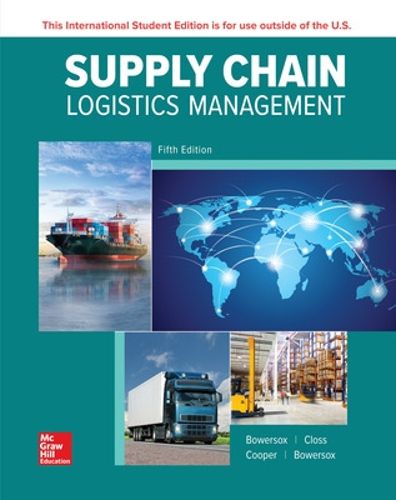Readings Newsletter
Become a Readings Member to make your shopping experience even easier.
Sign in or sign up for free!
You’re not far away from qualifying for FREE standard shipping within Australia
You’ve qualified for FREE standard shipping within Australia
The cart is loading…






The Fifth Edition of Supply Chain Logistics Management presents logistics in the context of integration within a firm’s supply chain strategy and operations.
The framework of supply chain management is initially presented by creating a foundation for in-depth study of the five logistics operational components in Part Two.
Challenges and strategies related to design and operational integration of logistics within a global supply chain are discussed in Part Three.
Part Four focuses on administrative challenges related to cross organisational collaboration, performance measurement, and concludes with the challenges of managing risk and achieving sustainability.
An essential feature is the integration of topical materials and examples into the supply chain logistics value creation process. Text materials are supported by study and challenge questions as well as contemporary cases. Discussion of IT is integrated throughout, and illustrations and examples highlight how firms deal with operational challenges and use logistics performance to gain competitive advantage.
$9.00 standard shipping within Australia
FREE standard shipping within Australia for orders over $100.00
Express & International shipping calculated at checkout
The Fifth Edition of Supply Chain Logistics Management presents logistics in the context of integration within a firm’s supply chain strategy and operations.
The framework of supply chain management is initially presented by creating a foundation for in-depth study of the five logistics operational components in Part Two.
Challenges and strategies related to design and operational integration of logistics within a global supply chain are discussed in Part Three.
Part Four focuses on administrative challenges related to cross organisational collaboration, performance measurement, and concludes with the challenges of managing risk and achieving sustainability.
An essential feature is the integration of topical materials and examples into the supply chain logistics value creation process. Text materials are supported by study and challenge questions as well as contemporary cases. Discussion of IT is integrated throughout, and illustrations and examples highlight how firms deal with operational challenges and use logistics performance to gain competitive advantage.